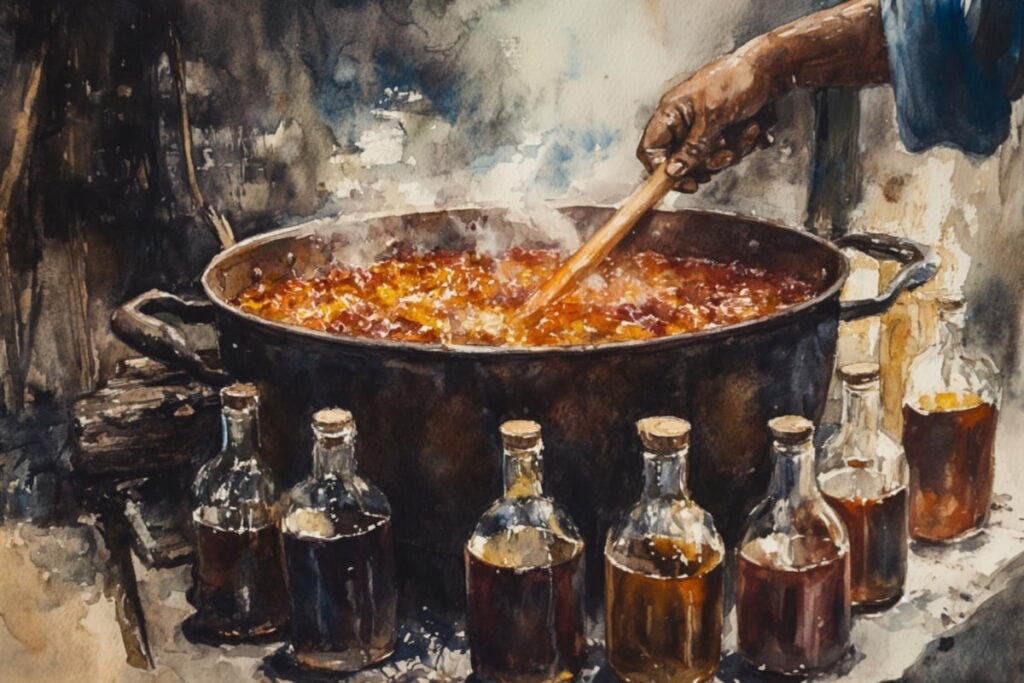
Authentic Jamaican black castor oil pours like molasses, smells like smoke, and leaves your fingers sticky.
There’s a reason it looks, smells, and feels nothing like the clear version, and it has everything to do with how it’s made.
So how is authentic Jamaican Black Castor Oil made?
Well… it’s a process. And I’m going to show you, step by step, what really goes into making the real stuff. But you might be surprised by just how much work (and fire) it takes.
Step 1: Harvesting and Preparing the Castor Beans
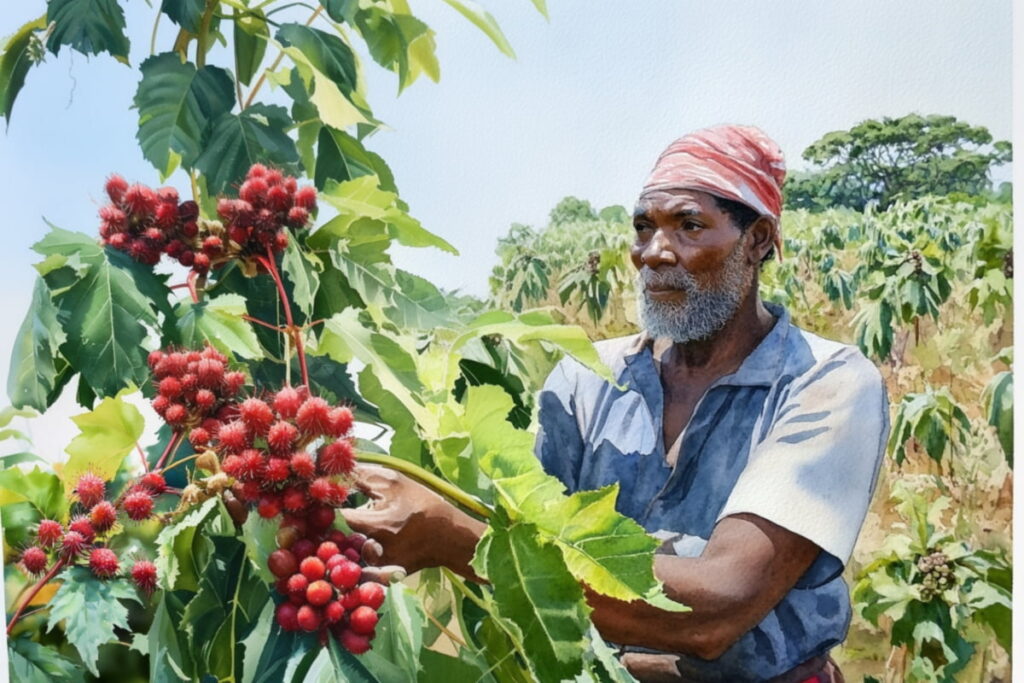
The process begins with the castor bean, the seed of the Ricinus communis plant and the source of the key ingredients in castor oil. In Jamaica, these plants often grow wild or on small family farms, usually without pesticides.
- Harvesting: The spiky green pods are picked by hand once they’re fully mature.
- Drying: The pods are spread out under the hot Jamaican sun for several days. As they dry, they crack open and release the beans inside.
- Hulling and Cleaning: The beans are then removed from their shells and carefully cleaned to get rid of any dirt or plant material.
This work is still done the traditional way, often by families who have passed the practice down for generations.
Step 2: The Crucial Roasting Process
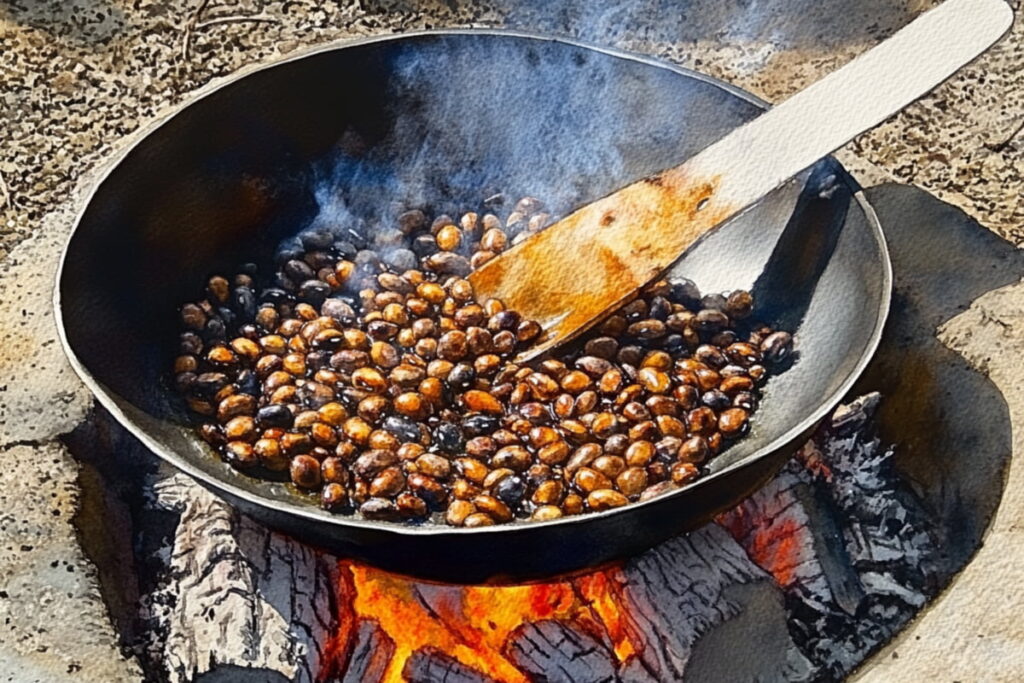
The beans go straight into a hot, dry pot over an open fire for about 10 minutes. This first heat treatment, sometimes called parching, isn’t about burning.
It’s about drying the beans all the way through, making them brittle enough to grind. And it’s here that their nutty, smoky aroma first begins to develop.
Step 3: Grinding the Roasted Beans
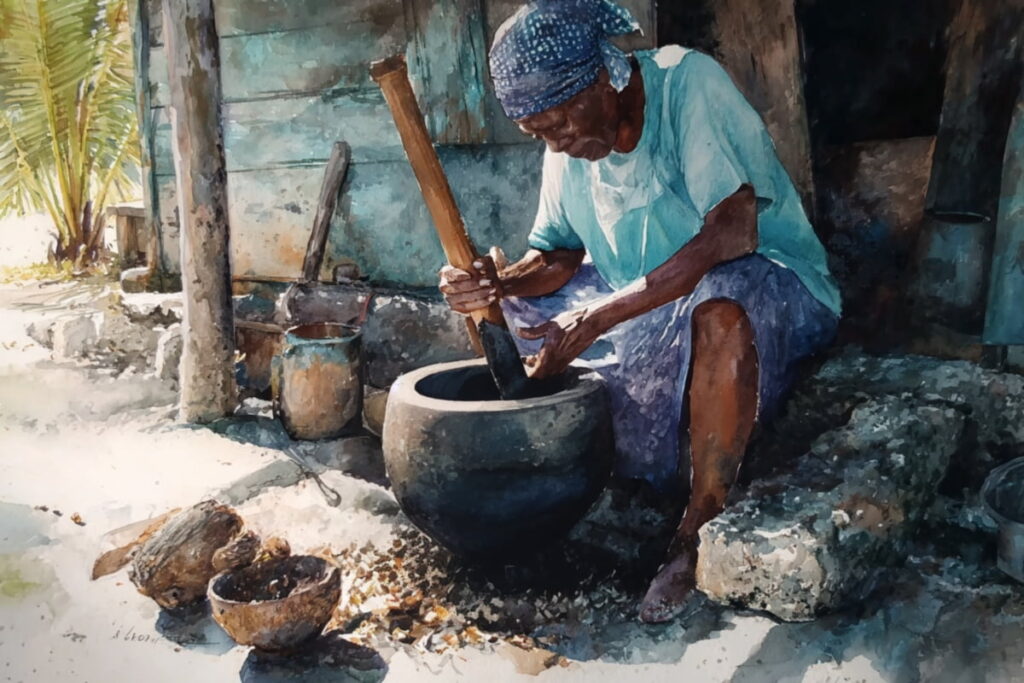
While still hot from the fire, the beans are crushed into a thick, dark paste. Traditionally, this is done by hand with a heavy wooden mortar and pestle. A little oil may appear here, but the real extraction comes later.
Step 4: Boiling and Extracting the Oil
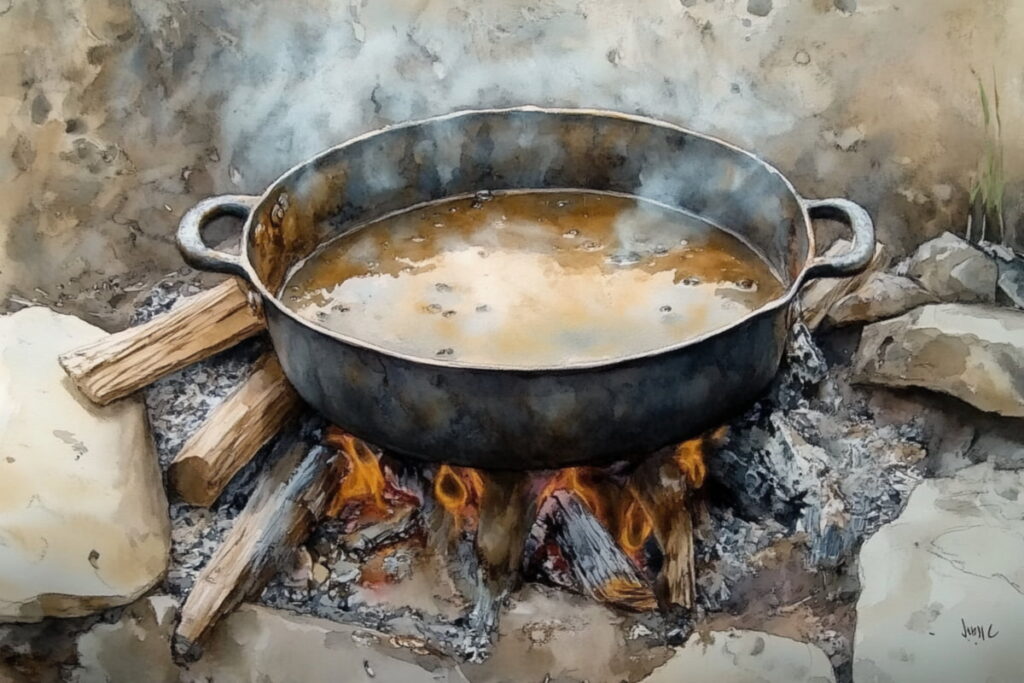
This is where the magic really happens, the stage that turns ground beans into the dark, smoky oil Jamaican Black Castor Oil is known for.
- Boiling the Pulp: The roasted bean paste goes into a big pot of boiling water and cooks over the fire for hours. As the water bubbles away, the mixture thickens.
- Rendering: Once the water has boiled off, the pulp at the bottom begins to char against the direct heat. This creates fine ash particles that mix into the oil. That ash is what gives JBCO its dark color, smoky aroma, and slightly alkaline quality, the hallmarks of authenticity.
- Extraction: When the oil is ready, it sits on top of the heavy dregs. The first batch is carefully poured off. To capture the last of it, fresh water is poured over the hot dregs, the remaining oil rises to the surface, gets skimmed off, and added to the main batch.
This is also the point where the oil takes on the qualities people love it for. Rich in fatty acids, nourishing to the scalp, and powerful for strengthening hair.
Step 5: Final Purification and Straining
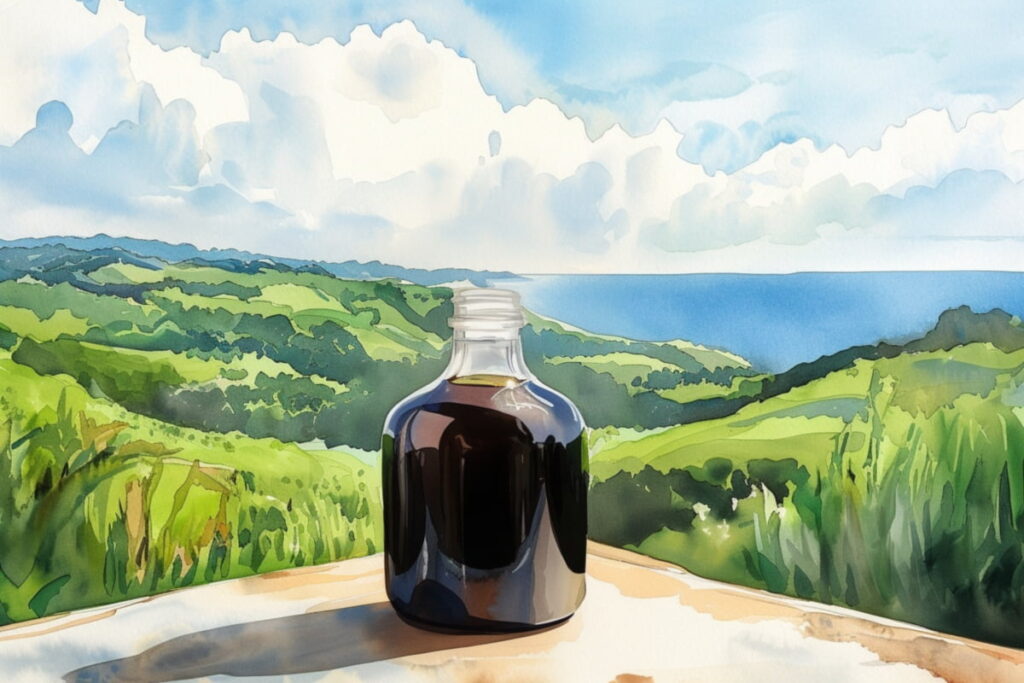
The last step is about purity. The collected oil is strained through cloth, leaving behind a smooth, unrefined liquid, dark, thick, and ready to bottle.
This is the authentic product, and if you’d like a fuller overview of what makes it unique, our guide to Jamaican Black Castor Oil explains it in detail.
The Authentic Difference

Ready for Authentic Jamaican Black Castor Oil?
Now you know why authentic Jamaican Black Castor Oil looks, smells, and feels the way it does, and why it works.
As you can see, every step in the process adds to its power.
After seeing the work that goes into it, why settle for less? Choose the authentic oil, your hair deserves it.